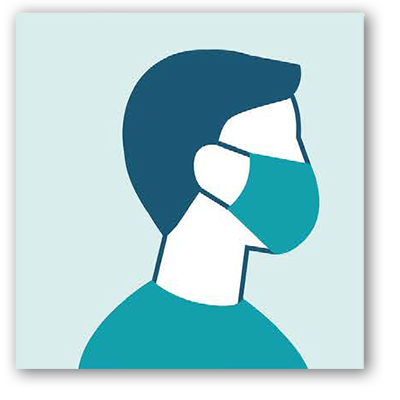Face masks are a crucial component of any health and safety program aimed at protecting the public health of all New Yorkers.
 The New York State Department of Health (DOH) and the New York State Education Department (SED) both say that mask breaks are an option in school settings. SED specifically calls for a written protocol on how mask breaks will be done; the DOH clarifies that they must be conducted while also maintaining social distancing requirements.
The New York State Department of Health (DOH) and the New York State Education Department (SED) both say that mask breaks are an option in school settings. SED specifically calls for a written protocol on how mask breaks will be done; the DOH clarifies that they must be conducted while also maintaining social distancing requirements.
Knowing what we do about aerosol transmission, all written protocols should limit the factors we know create and spread aerosols. NYSUT recommends the following:
- Mask breaks should be during quiet times.
- No talking, singing or shouting.
- Mask breaks should be scheduled and not ad hoc.
- Mask breaks are safest outdoors or
- in other areas with enough outdoor air.
- Mask breaks should be short.
- Social distancing must be maintained during breaks. A minimum distance of six feet must be maintained between unmasked individuals.
- Accommodations must be considered for individuals who feel uncomfortable around people who are unmasked. This is especially important for individuals at risk of severe COVID-19 illness per Centers for Disease Control standards.
How is COVID-19 transmitted between people?
1) Via fomites, objects that are contaminated by the virus, including human skin. This is not thought to be the main way the virus spreads, according to the CDC.
2) Another pathway is by droplets, small bits of saliva or respiratory fluids that infected individuals expel when they cough, sneeze or talk. Droplets propel through the air but fall to the ground after traveling 3-6 feet. The CDC and the World Health Organization (WHO) advise that this is the primary mode of transmission for COVID-19.
3) But droplets are less important than the third potential pathway: aerosols. Aerosol transmission is like droplet transmission, except that the bits of fluid are so small that they can linger in the air for minutes to hours. This means they can be in the air long enough to be inhaled.
Overall, the evidence in favor of aerosol transmission is stronger than any other mode. Recently 239 scientists appealed to the WHO to reevaluate its stance and support the emerging science. Read their letter here.
We must also consider:
- The CDC has issued guidance saying that about 40 percent of people who have COVID-19 are likely asymptomatic, meaning they show no symptoms.
- Individuals are at a higher risk level for contracting COVID-19 when they are in the proximity of people not wearing masks. The longer they are in a space with unmasked individuals, the higher the risk level. The risk continues to rise if they are in close proximity.
40 percent of people who have COVID-19 are likely asymptomatic, according to the CDC.
Go to nysut.org/reopen for a variety of guidance documents on health and safety considerations, instructional issues and advice for local leaders, as schools move forward with educational plans this fall.